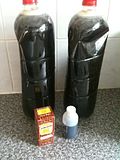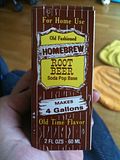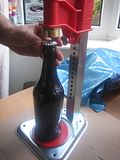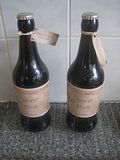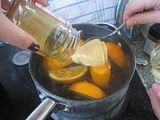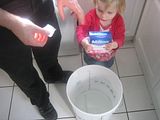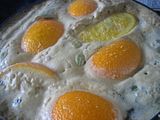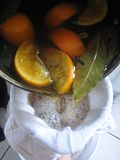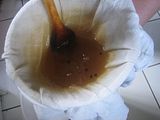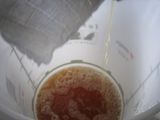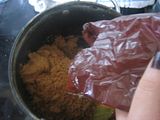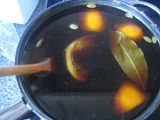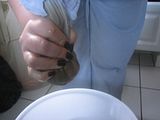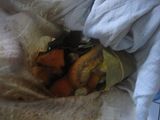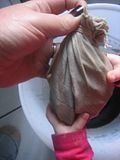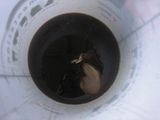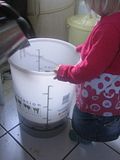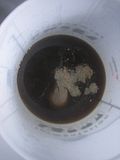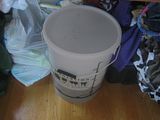After reading through a lot of recipes for basic mead, I found these two intriguing
So I had a look through the cupboards and made up my own recipe using these as a guide.
Dark Orange Mead - 2 gallons
- 7 x 340g jars of honey.- I used 6 x Tesco's own, and 1 x eucalyptus honey.
- 2 large oranges
- The zest of one lemon
- 2 cinnamon sticks
- 10 cardamom pods
- 10 cloves
- 2 heaped tsp of yeast - I used champagne yeast for it's higher alcohol, can use any type
- 10 black peppercorns
- 1kg brown sugar
- 2 x fermentation buckets or demijohns. They need to be airtight.
Using a large gallon stock pot if possible, (I don't currently have a pan this large, hence the use of two pans at some points during this process) empty the jars of honey
Add a little boiling water to make it liquid and then add the sugar
Slice the oranges into quarters and put into the pan with the other spices
Top up with water and then bring to a low boil, simmer for 30 minutes and then leave to cool to room temperature.
Empty liquid into fermentation bucket through a sieve
Empty the spice and orange bits that have been collected in the sieve and place into a muslin, tie the muslin into a parcel with string and keep to one side.
Top up the liquid in the fermentation bucket with room temperature water (any colder and the yeast will take a bit longer to get started) up to 2 gallons and add 2 heaped tsp of yeast. (it's 1tsp per gallon so can be adjusted if making more or less mead)
Give it a good stir, then place the parcel of spicy orange bits back in the liquid and close the air tight lid.
Place somewhere warm and out of direct light or drafts. Ours lives under the sewing table in the front room (although from the amount of root beer, ginger beer, mead and brewing paraphernalia on the table it may be due a name change at some point ;) )
After 48 hours, lift the lid and check that the yeast is active. There should be frothing and some fizzing. Don't worry about the smell and cloudiness at this point, it does tend to smell a bit funky.
If there has been no frothing, fizzing, or the lid of the bucket hasn't 'domed' then it may be worth adding 1 more tsp of yeast and giving the whole mixture a good shake. Leave it for another 48 hours and then check again. If it's still not active, then your bucket may be in too cold a spot and will need relocating. Yeast needs to be at room temperature to be at its most active.
Once the yeast has been active, remove the muslin parcel and dispose of it then close the lid and leave for 4 weeks. Completely leave it, no poking, prodding, testing, touching, sniffing....nothing.
After 4 weeks, rack the mead into a different bucket. To 'rack' means to syphon the clear liquid away from the sediment at the bottom. With our first batch, we didn't have a second bucket so racked it into 2 litre pop bottles instead, this worked fine and was useful for checking the sediment at the bottom.
After 2 weeks, gently pour off a little taster snifter and be proud of yourself ;)
(We've actually started drinking our first batch mead at this stage, because it is so very nice)
After another 2 weeks, rack off into another bucket again in order to leave the last of the sediment, leave to settle and then bottle up.
The flavour of the mead develops nicely if the bottle is thoroughly chilled before drinking.
Enjoy :)

















































